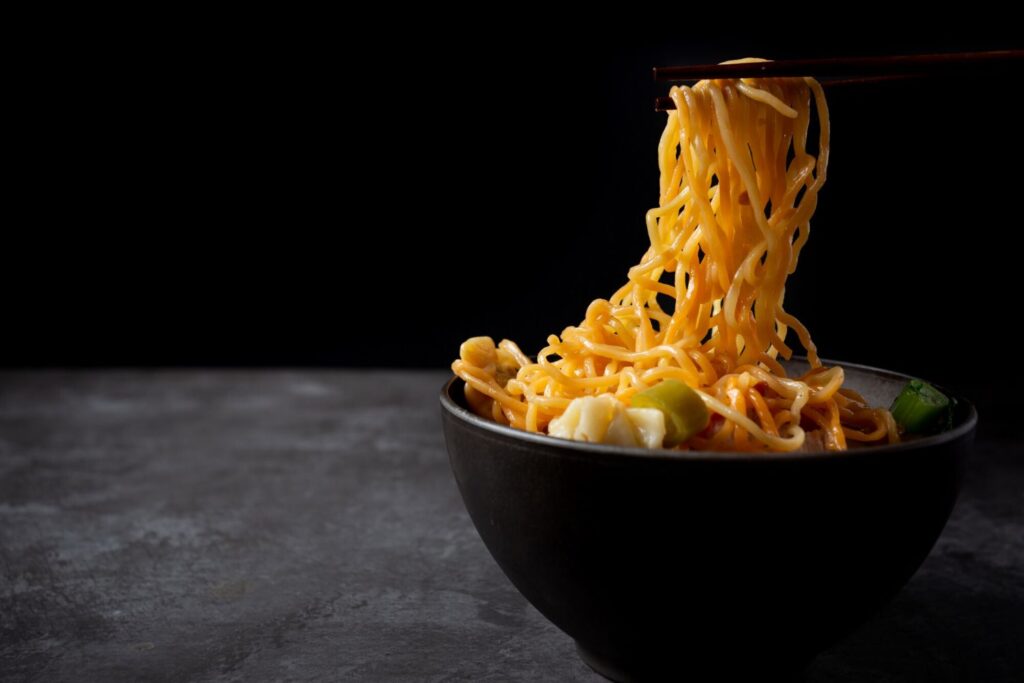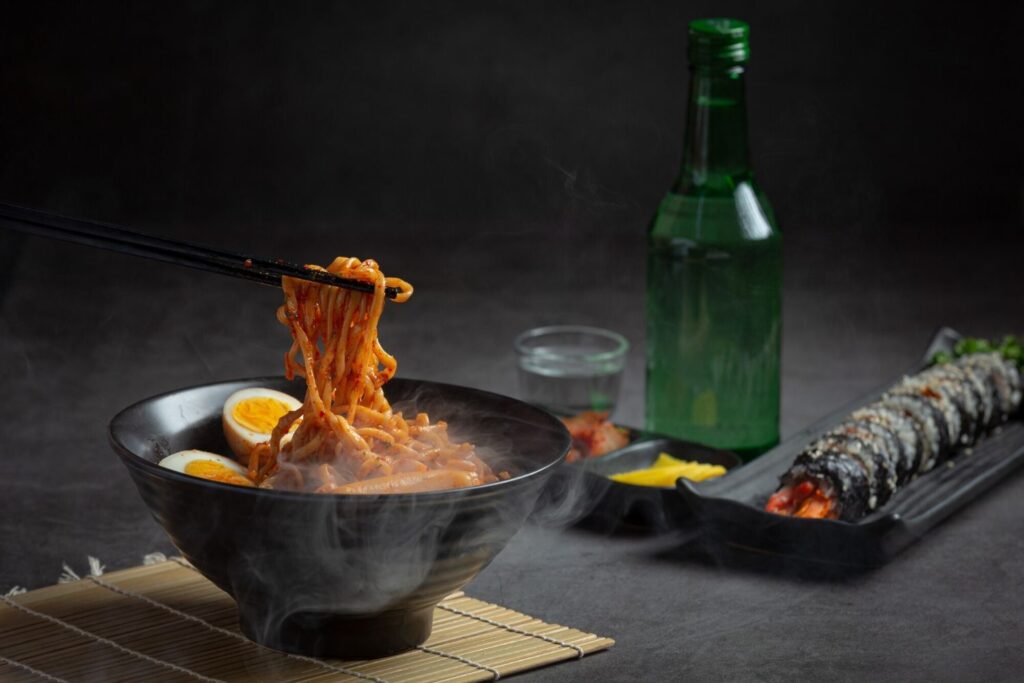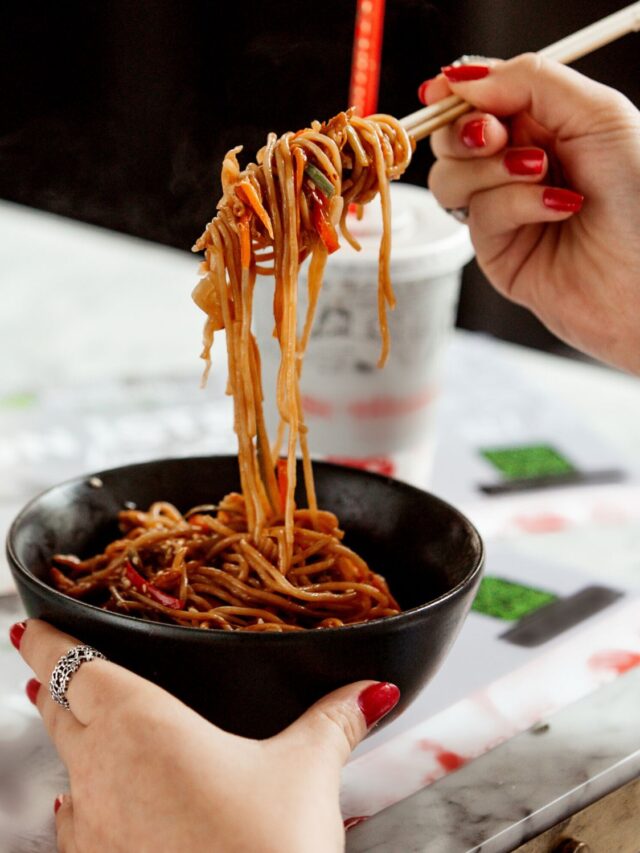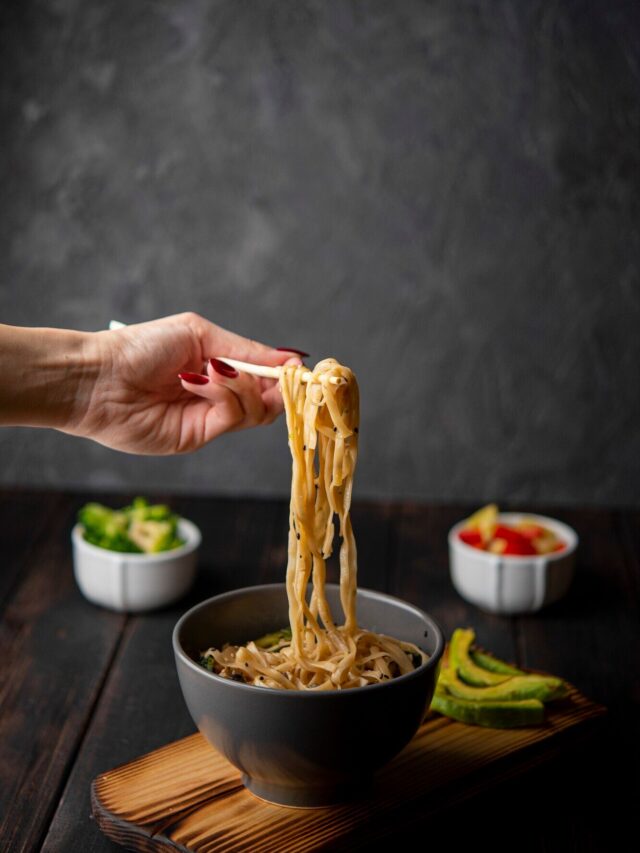
Korean cuisine has captivated foodies around the world with its bold flavors, vibrant colors, and rich culinary traditions. Among its many delights, Korean noodles hold a special place. From comforting bowls of sizzling noodles to spicy stir-fried dishes, noodles are a cornerstone of Korean cuisine, offering something for every palate.
This guide delves into the diverse world of Korean noodles, exploring their history, unique characteristics, and iconic dishes. Whether you’re a seasoned fan of Korean cuisine or a curious newcomer, this comprehensive overview will inspire you to embrace the delicious world of Korean noodles.
Table of Contents
1: A Brief History of Korean Noodles
Korean noodles have a long and storied history that reflects the country’s cultural evolution and refinement:
Source:
- Noodles were introduced to Korea from China, but they have evolved to suit Korean tastes and cooking techniques over time.
- The earliest records mention noodle dishes from the Goryeo Dynasty (918-1392).
Symbolism:
- Noodles often symbolize longevity and prosperity in Korean culture, making them important at celebrations and special occasions.
- Pro tip: When enjoying Korean noodles, remember to savor their historical significance as much as their taste!
2. Types of Korean Noodles
Korean noodles come in a variety of varieties, each with their texture and flavors:
Wheat noodles (guksu):
- Commonly used in soups like Naengmyeon and Kalguksu.
- Soft and versatile, perfect for soaking up flavorful broth.
Sweet Potato Starch Noodles (Dangmyeon):
- Transparent and chewy, these are the stars of japchae (stir-fried glass noodles).
Rice Noodles:
- Used in dishes like tteokguk, a rice cake, and noodle soup traditionally enjoyed during the Lunar New Year.
Hand-Cut Noodles (Kulgoksu):
- Rustic and hearty, these noodles are hand-cut and served in a thick, comforting broth.
- Pro Tip: Experiment with different noodle varieties to discover your personal favorite.
3. Popular Korean Noodle Dishes
Discover the most beloved Korean noodle dishes and what makes them unique:
Japchae (Stir-fried Glass Noodles):
- A flavorful combination of sweet potato starch noodles, vegetables, and a soy-based sauce.
- Often served at events, it’s nutritious and delicious.
- Jajangmyeon (Black Bean Noodles):
- Chewy wheat noodles are topped with black bean sauce, shredded pork, and vegetables.
- A comfort food favorite, especially popular on Black Day (Korean Singles’ Day).
Naengmyeon (Cold Noodles):
- A refreshing dish featuring buckwheat noodles in a thin, icy broth.
- Perfect for hot summer days, this dish is often garnished with boiled eggs, cucumbers, and shredded beef.
Bibim Guksu (Spicy Mixed Noodles):
Thin wheat noodles tossed in a spicy, tangy sauce made with gochujang (Korean red chili paste).
- Light and hearty, this is a popular choice for a quick meal.
- Kalguksu (Knife Cut Noodle Soup):
- A hearty soup with hand-cut noodles, vegetables, and a rich, savory broth.
- Perfect for cold winter days.
- Pro tip: Pair each dish with traditional Korean side dishes like kimchi or pickled radishes for an authentic experience.
4. Unique Flavors and Ingredients in Korean Noodles
What sets Korean noodles apart is the use of distinct flavors and ingredients:
Gochujang (red chili paste):
- A cornerstone of Korean cuisine, spicy noodle dishes add heat and depth.
- Sesame oil:
- Provides a nutty aroma and adds richness to many noodle recipes.
Soy sauce:
- A versatile ingredient that forms the basis of many Korean sauces.
Broth bases:
- Broths made from beef, chicken, anchovies, or kelp provide the base for many noodle soups.
Fresh vegetables:
- Carrots, spinach, zucchini, and mushrooms are commonly used, adding both nutrition and color.
- Pro tip: Invest in quality Korean pantry staples to replicate authentic flavors at home.
5. Cooking Techniques and Tips for Perfect Korean Noodles
Master the art of making Korean noodles with these expert tips:
Cooking the Noodles:
- Cook the noodles al dente, as they will continue to soften in sauces or broths.
Stir-frying:
- Use high heat and keep the ingredients moving for a smoky flavor and perfect texture.
Balancing the Flavors:
- Korean dishes often balance sweet, spicy, salty, and sour flavors. Adjust the seasonings to taste.
Presentation:
- Korean noodle dishes are as much about appearance as they are about flavor. Arrange the ingredients well and garnish with sesame seeds or chopped scallions.
- Pro tip: Use a wok or large frying pan to distribute the heat evenly when stir-frying.
6. Korean Noodles for Every Occasion
Korean noodles are versatile enough for any setting:
Comfort Food:
- Quick dishes like Bibim Guksu are ideal for busy weeknights.
Celebrations:
- Japchae and Jjajangmyeon are often served at festive gatherings.
Seasonal Favorites:
- Naengmyeon is a summer staple, while Kalguksu shines in the winter.
- Pro Tip: Customize the spice level and ingredients to suit your guests’ preferences.

Conclusion:
Korean noodles offer a delightful journey through one of the world’s most vibrant cuisines. From hearty soups to refreshing cold dishes, the diversity of flavors and textures ensures there’s something for everyone. By understanding the history, types, and unique flavors of Korean noodles, you can bring the essence of Korea to your dining table.
Whether you’re cooking for yourself, your family, or hosting a Korean-themed dinner party, these iconic dishes are sure to impress. So grab your chopsticks and embark on a culinary adventure that celebrates the rich tradition and irresistible flavors of Korean noodles.


